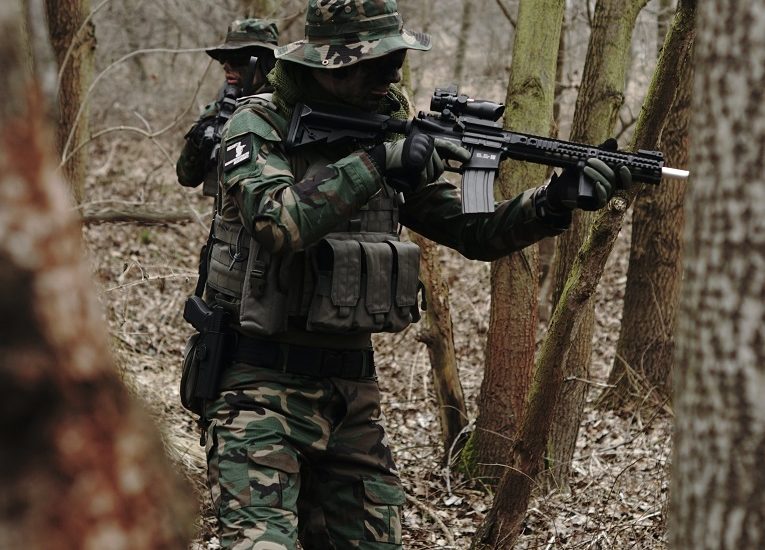A level 4 body armor plate must be exceptionally sturdy to deflect high-caliber rifle bullets. To block the heavier and faster shots, the plate needs to be much thicker and can get very heavy. Therefore, one option is to create it entirely out of steel, like most Level III armor plates. Steel armor, albeit the most inexpensive, has its own set of issues that might arise, such as Spalling. Steel armor can cause collateral damage by shattering upon impact and sending metal shards into nearby civilians or coworkers. This is why lightweight options like polyethylene (PE) and ceramic composite (Ceramic) armor plates are preferable.
Level 4 body armor plate needs to withstand far heavier projectiles than those used in previous tiers; therefore, ordinary steel plates aren’t an option. Many well-known armor manufacturers use UHMW PE and ceramic composite to create their level 4 body armor plate. Level 4 body armor plates typically consist of three layers.
- The ceramic strike face which is affixed to a polyethylene (PE) backing plate at the back.
- The bullet’s impact is diffused and broken up by the ceramic front, while the PE plate at the back absorbs the energy left over.
- As a final step, a layer of rubber is applied over the steel plate and the ceramic strike face to further aid in stress distribution and maintain the plate’s original shape after the ceramic strike face has been fractured.
Note that a ceramic-PE body armor plate loses its structural integrity after taking a few hits, unlike fully steel body armor. Modern ceramic body armor plates, on the other hand, can be repeatedly shot with pistols and short rifle bullets like common AR and AK rounds without becoming significantly damaged. However, the level 4 body armor’s ceramic strike face can be damaged by even pistol shots.
For more articles, please click here.





